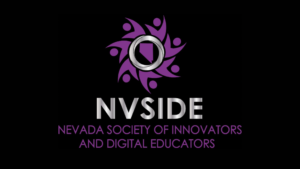How to Humanize Learning in the Classroom with 3 Global Issues

In honor of International Education Week, we’re bringing you a series of blogs that celebrate the benefits of global competencies, international education and cultural exchanges. Stay tuned for more like this throughout the week!
By Cleary Vaughan-Lee
Each day, we hear a story in the news related to the impacts of migration, climate change, and language loss. These stories are important touchstones of our times, affecting individuals, families, and our local and global communities. How can educators bring these topics to the classroom while connecting them to students’ daily lives?
Stories, in the form of short documentary films and photography, provide students opportunities to explore timely, global issues in compelling and engaging ways. Learning becomes alive and relevant when using multimedia stories in the classroom, as students are inspired to think about the world and themselves in new ways.
How can meta issues such as migration, climate change, and language loss be integrated into the classroom while building critical thinking skills and empathy? The following are three global stories, provided by the Global Oneness Project, which highlight people and places that are experiencing cultural, social and environmental changes.
Migration
As of March 2016, according to the BBC, an estimated 11 million Syrians have been forced from their homes, and 4.5 million—half of Syria’s population—have fled the country. More than 250,000 Syrians have lost their lives, 13,000 of them children.
Welcome to Canada is one story that humanizes the Syrian refugee crisis for students. It features Mohammed Alsaleh, a young refugee who fled violence and imprisonment by the Assad regime during Syria’s Civil War. Alsaleh was granted asylum in Canada and counsels newly arrived Syrian refugee families with the Immigrant Services Society of British Columbia (ISSofBC). The film depicts Mohammed as he builds a new life, striving to bring his family to safety from Turkey.
In the companion lesson plan, “A Refugee’s Story,” students discuss what it might be like to have to leave their home country and quickly adapt to learn a new language, a new culture, and a new place. The following is a classroom discussion question.
The Prime Minister of Canada, Justin Trudeau, when asked about welcoming Syrian refugees to Canada said in a 2015 interview, “This is something that we are able to do in this country because we define a Canadian not by a skin color or a language or a religion or a background, but by a shared set of values, aspirations, hopes and dreams that not just Canadians but people around the world share.” What do you think Trudeau means by a “shared set of values”? How does Mohammed live by a set of values?
Climate Change
Impacts of climate change are especially suited for presentation through film and photography due to their engaging imagery. One short film, Isle de Jean Charles, documents two families who are facing a future where rising seas, coastal erosion, and storms are threatening to wash away their home on a small island of the Louisiana coast. Scenes include submerged houses, dying trees, children fishing, and residents describing their personal challenges. Such scenes bring this community and its challenges to life, vividly drawing students into real-world stories of climate change.
In the accompanying lesson plan, “A Vanishing Island,” students are guided through a classroom discussion with questions such as:
What are some advantages and disadvantages to living near the coast? What do the characters in the film like and dislike about living on the Louisiana coast? And, what might the residents of the island lose if they become climate refugees?
Take a look at this Climate Change Collection. It contains this story from Louisiana as well as ones from Alaska, Kiribati, and the polar regions of our planet. Common themes embedded throughout this collection include connection to home, coastal living, change versus tradition, cultural displacement, bearing witness, responsibility, and sustainability.
Language Loss
UNESCO estimates that half of the 7,000 living languages spoken today will disappear if nothing is done to preserve them. In the United States, many Native American languages are struggling to survive—more than 130 of these languages are currently at risk, with 74 languages considered “critically endangered,” according to UNESCO. Each of these endangered languages preserve priceless cultural heritage.
Every student can relate to the experience of speaking a language and the significance this has to their identity. Many students have relatives that speak other languages, giving them access to valuable stories, cultures, and traditions. What might happen when a language disappears?
This question is explored in the short film Marie’s Dictionary which highlights Marie Wilcox, a Native American woman who is the last fluent speaker of Wukchumni, and a dictionary she created to keep the language alive. In the accompanying lesson plan, students are challenged to consider how important it is for Marie to preserve her language. The following is one classroom discussion question:
Filmmaker Emmanuel Vaughan-Lee said in a National Geographic radio interview that Marie’s story is important to document. “In America, there are many cultures, like the Wukchumni, whose stories, histories and families are connected through that language,” said Vaughan-Lee. As these languages become extinct, people can lose these connections. Why do you think it is important to preserve languages? What connections do you think could be lost when a language, like Wukchumni, goes extinct?
Experienced through multimedia, these three global issues—migration, climate change, and language loss— create global-to-local connections and challenge students’ assumptions. Teachers can integrate these stories into current curricula to provide a relatable context for global issues. I’ve heard some thoughtful student responses to these stories over the years. What strikes me each time I share them with students are the personal connections they make, even if the story or issue is taking place on the other side of the world. This is the unique power of film and photography—to engage and compel creativity and problem solving. In the classroom, the use of multimedia storytelling to convey important global issues creates meaningful opportunities for learning.
To view all of these stories and lesson plans in one place, as well as additional stories and lesson plans, take a look at this Global Oneness Project collection—Migration, Climate Change, and Language Loss.
For more, see:
- Educating for Global Competence: 6 Reasons, 7 Competencies, 8 Strategies, 9 Innovations
- Review: Global Education Guidebook
- Designing Student Projects for Global Readiness
- 3 Reasons to Expect the Unexpected… and What To Do About It
Cleary Vaughan-Lee is the Executive Director of Global Oneness Project. You can follow Global Oneness Project on Twitter @goproject.
Stay in-the-know with all things EdTech and innovations in learning by signing up to receive the weekly Smart Update.






0 Comments
Leave a Comment
Your email address will not be published. All fields are required.